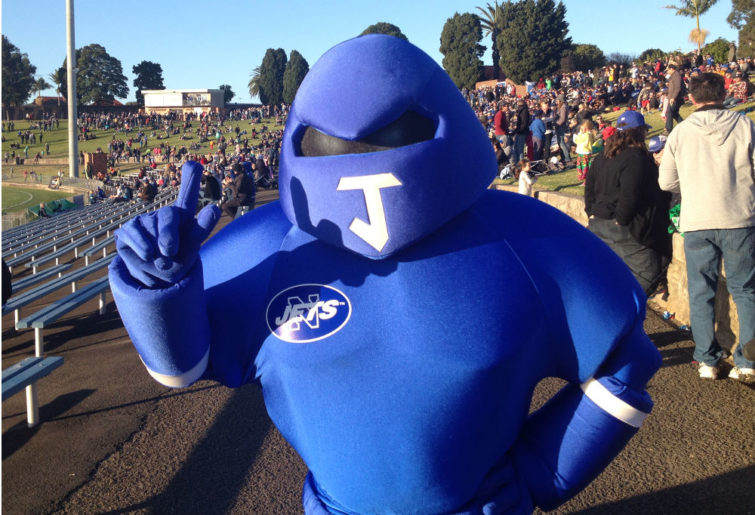NRL Round 7 Team Lists Late Mail: Dolphins get exemption plus Wayne now in doubt, star Rooster out
The Dolphins have again been given permission by the NRL to go outside their top 30 in order to field a team, as coach…
Opinion
For the past 25 years, the two second-tier rugby league competitions in Australia have been run by the NSWRL and QRL, mostly independent from the NRL.
Since 2014 the winners of these two competitions have played a curtain raiser to the NRL grand final known as the NRL State Championship
The Queensland Cup is generally considered to be a continuation of the old Brisbane competition that operated from 1922 to 1997 and launched the careers of several famous Kangaroos captains.
While the BRL or QRL Cup was weakened by the launch of the Brisbane Broncos in 1988, the competition has maintained relevance and continues to operate with a good mixture of heritage clubs from metropolitan Brisbane and expansionist clubs from regional Queensland and even Papua New Guinea. These QRL clubs have always been fully independent from the Queensland-based NRL clubs (Broncos, Titans and Cowboys).
The second-tier competition in NSW has also changed significantly over the past 25 years, though the changes do not represent progress. In fact, quite the opposite.
The make-up of the NSW Cup (or Canterbury Cup, as it is currently known) has constantly oscillated between NRL reserve teams, stand-alone teams and joint-venture teams. For this reason the NSW Cup is generally seen as a no-frills competition that exists to serve the interests of the NRL clubs’ coaching staff.
Granted, the NSW Cup does still attract older fans to the heritage grounds of Henson Park in Marrickville and North Sydney Oval, where the tickets and beer prices are significantly lower than the NRL prices.

Jetman still loves Henson Park. (Photo: Kris Swales)
But with a lack of stability, direction and identity, the NSW Cup has failed to expand beyond the boundaries of greater Sydney and has struggled to gain any real publicity necessary to attract new fans through the gates.
The stagnation at the second tier is mostly due to the NRL clubs maintaining their control of the NSWRL organisation. These clubs have always supported a reserve-grade competition at the second tier in order to maintain full control of their reserve squads and junior pathways.
That level of control is difficult to give up when it has existed since 1908.
Most fans would agree that the second tier would be more appealing if there were more stand-alone clubs not acting as feeder clubs to NRL teams.
Another benefit to having stand-alone clubs in the second tier is that they can compete against the NRL clubs in pre-season tournaments without holding anything back.
One possible solution to the current stagnation is to merge to the NSW Cup (second tier) and Ron Massey Cup (third tier) into a 20-team unified competition comprising 12 NRL reserve teams from NSW and New Zealand and a further eight fully stand-alone clubs from NSW and Fiji with no NRL affiliation.

(Photo by Jason McCawley/Getty Images)
Now, the interesting thing about 20 teams is that the competition could be run as two graded conferences of ten teams each, with opportunity for promotion and relegation.
Initially we would expect the top conference to comprise NRL reserve teams, but with only ten spots up for grabs, at least two NRL reserve teams would always be relegated to the bottom conference.
We know that promotion and relegation will never work in the NRL but it is definitely possible within the NSW Cup.
The eight stand-alone clubs would need to be well financed and well supported by either corporate sponsors or established leagues clubs.
It is also important to include a good mixture of heritage clubs with historical value, and clubs representing regional communities not currently aligned with NRL clubs.
With this in mind, the clubs that I am proposing are:
• Fiji Bati
• North Sydney Bears
• Newtown Jets
• Wentworthville Magpies
• Mounties (Western Sydney)
• Central Coast Centurions (Gosford)
• Western Rams (Orange/Bathurst)
• Northern NSW (Tamworth/Coffs Harbour)
The Western Rams are currently a representative team only (i.e. Group 10 and 11). However they are well known for winning the 1974 Amco Cup, which was a mid-week knock-out competition comprising all the first-grade NSW premiership teams plus invitational teams from regional NSW, Queensland and New Zealand.
The Riverina, Hunter and Illawarra/Shoalhaven districts are already supported by the Canberra Raiders, Newcastle Knights and St George Illawarra Dragons, who would be responsible for running an NRL reserves team in the NSW Cup.
However, the option of branding these reserves teams as the Bidgee Bulls, Newcastle Rebels and Illawarra Steelers may be worth considering, given their heritage value.
So who will pay for this second-tier rugby league competition ?
Obviously a significant amount of financial planning would need to be done to ensure that the competition is viable to all parties and to ensure that the NRL clubs are not significantly advantaged by their NRL grants received each year.
The second-tier salary cap would also need to reviewed, along with a redistribution of the NRL’s television broadcasting earnings to ensure that the stand-alone NSW Cup clubs receive a fair share.
In return, the stand-alone NSW Cup clubs would need to shoulder some responsibility for growing the game in their respective regions.